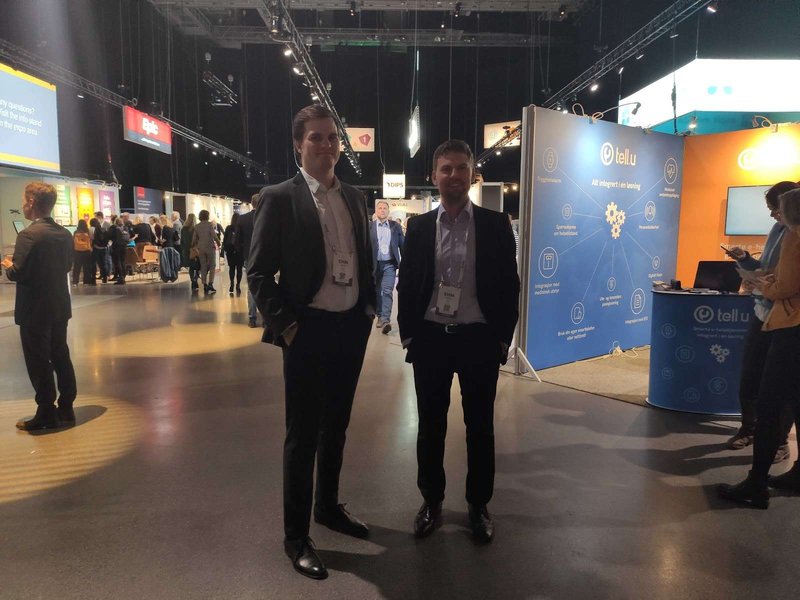Last week I attended EHiN 2019 (“EHealth in Norway”) in Oslo, the largest healthtech conference in Scandinavia, representing Thorgate. EHiN was inspiring, rich with knowledge and a perfect opportunity to network. I met hundreds of people from around the world building and innovating new and modern solutions for the future of healthtech industry. It was refreshing to see smart people with great ideas on how to make human health better efficiently!

There was a lot to take in during the days we spent at EHiN, but I summarized the key topics discussed in the conference.
The future is big data and AI
Big data and Artificial Intelligence (AI) were the most used word at the conference and also during private conversations among attendees. While they might just seem like modern buzzwords, but in reality, they hold immense significance in the healthtech industry.
Over the years, we have collected so much data in the healthcare industry that with the advent of new technologies we can create a health system that will go beyond treating disease. We can now work on preventing disease before it strikes. However, there is still the question of how structured and pure this health data is, but the most important part is that we are moving towards using it.
Another important point was that it is not the data but the analytics that are important. The data has always been there but healthtech software solutions that are able to analyze this data and interpret it are bringing the radical change in the industry. Machine learning is extremely important in the application of these technologies, and therefore Python should be a popular choice among the developers of these healthtech solutions including Thorgate.
Risk averseness is a barrier to the adoption of innovative products
Medical sector has been involved in carrying out clinical trials and tests for years. The result of this has been hundreds and even thousands of deaths. This is the risk that the sector is taking in order to come up with new medicines, medical devices or best practices.
On the other hand, when it comes to the design of public services and new practices in medicine, people happen to be very risk-averse. People working in the healthcare industry are often afraid of using products that need to be tested on the market before they are put out to active use.
The health sector is coming to the realization that the risk-averse nature of healthcare remains 'a barrier' to the adoption of innovative products. Systems need to keep pace with new technologies and resource local adoption or some game-changing products are going to be overlooked. However, medical technology manufacturers are coming up with alternatives and solutions to increase adoption in real-life situations to eventually improve patient care.
More agility is needed in public tendering
EHiN also had quite interesting discussions about the tendering system. The majority of the healthtech innovation is public and therefore companies have to go through governmental tendering systems. This puts the pressure on agile delivery and testing of different digital products for healthtech. Modern software and digital service development could be considered just like any other R&D investment given the agility and the unexpectedness is already prewritten onto this.
The industry needs more product designers
After going through the majority of booths at EHiN exhibition, and seeing some great solutions, I noticed that most products did not follow the best practices of modern software design.
People today are used to the iOS and Android interface designed by professional product designers. However, when it comes to solutions built for the medical sector, especially for clinicians and healthtech specialists, a good UX and a modern product design are not the priority. While there is ample room for improvement here, I am happy that the focus at Thorgate is reasonably divided between back-end structure and great UX to make the software user-friendly.
There could be more Python used in healthtech
As mentioned before, Python is a need in the industry given the currently available areas of improvement. Majority of the software that is built for the medical sector is using in .NET, or Java, etc. However, we already know that the future is AI and Machine Learning.
There were only a few companies at the exhibition that were using Python in their work and they were great. Big Data and Analytics will define the future course of the healthcare industry, and the sooner the new tech turns to Python, the better for the whole industry!
It's time for the industry to move towards value-based measurements
According to a study done by the American Academy of Family Physicians (AAFP), 60% of companies have not taken a single step towards shifting to Value-Based Healthcare. At EHiN, there were many discussions about value-added health measurements.
Value-based healthcare is a healthcare delivery model in which providers, including hospitals and physicians, are paid based on patient health outcomes. Value-based healthcare is value measured, rather than transactional like the traditional clinical workflow, which also means a change of management is required.
In most countries, health contributions are measured by counting the number of people involved. However, value-based healthcare is necessary and its high time to implement it. Currently, the healthcare system is under ever-increasing pressures, including an aging population and an increasing need for chronic conditions care. However, I could see that there are already great initiatives worked upon on this and that is how it should be in the long-term.

Conclusion
To sum it up, EHiN is a really great initiative by ITK-Norge and the Ministry of Health and Care services Norway to boost innovation in healthtech in Scandinavia. I appreciate Nard Schreurs from IKT-Norge for having created this conference already in 2014! As EHiN celebrates its 6 years of success, it has grown from 600 people and 70 speakers to over 1500 people and 150 speakers. This number, along with the discussions at EHiN are a key indicator of the direction the healthtech industry is moving to.
Related Articles
How to speed up product development


